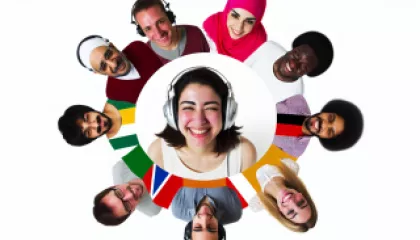Desde que me lembro, sempre fui fascinado pela complexidade da mente humana e pelos mistérios que ela esconde. Meu nome é Luiz Andrade, e ao longo dos últimos 11 anos, tenho dedicado minha vida a compreender e ajudar pessoas a lidar com comportamentos compulsivos. Este não é apenas um trabalho para mim; é uma verdadeira paixão.
Minha abordagem é um tanto única. Eu acredito profundamente que cada pessoa carrega dentro de si as chaves para sua própria cura e autodescoberta. O que eu faço é ajudar a encontrar essas chaves. Não há nada mais gratificante do que ver alguém se libertando das correntes de seus próprios comportamentos compulsivos e começando a caminhar em direção a uma vida mais plena e livre.
Por que comportamentos compulsivos? Bom, ao longo dos anos, percebi que muitas vezes são mal interpretados ou simplificados excessivamente. Eles são como icebergs, onde a maior parte está submersa, escondida sob a superfície. Trabalhar com esses comportamentos exige paciência, compreensão profunda e, acima de tudo, uma abordagem personalizada. Nenhum caso é igual ao outro, e é isso que torna meu trabalho tão desafiador e, simultaneamente, incrivelmente recompensador.
Meu compromisso com aqueles que buscam minha ajuda é inabalável. Eu estou aqui para ouvir, entender e, juntos, traçarmos um caminho em direção à liberdade emocional e comportamental. Acredito firmemente que a mudança é possível, independentemente de quão enraizado ou complexo um comportamento possa parecer.
Além da minha profunda dedicação ao meu trabalho, valorizo a criação de um ambiente seguro e acolhedor para todos que passam pela minha porta. A confiança e o respeito mútuo são fundamentais na nossa jornada juntos. É essencial que você se sinta ouvido, compreendido e aceito, sem julgamentos.
Se você sente que está lutando contra seus próprios comportamentos compulsivos e está procurando por uma abordagem que valorize a individualidade, a compreensão profunda e a colaboração, então talvez eu possa ajudá-lo. Juntos, podemos explorar as raízes desses comportamentos, entender seus gatilhos e trabalhar em estratégias que promovam uma mudança duradoura.
Convido você a dar esse passo corajoso em direção ao autoconhecimento e à liberdade. Vamos juntos desvendar os segredos da sua mente e encontrar o equilíbrio e a paz que você merece. Lembre-se, o caminho pode ser desafiador, mas você não precisa percorrê-lo sozinho. Estou aqui para apoiar, guiar e celebrar cada pequena vitória com você.
Com esperança e dedicação,
Luiz Andrade







